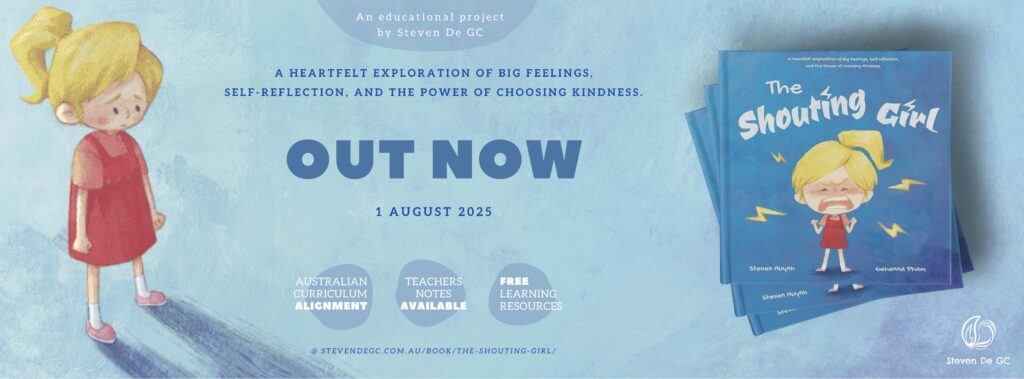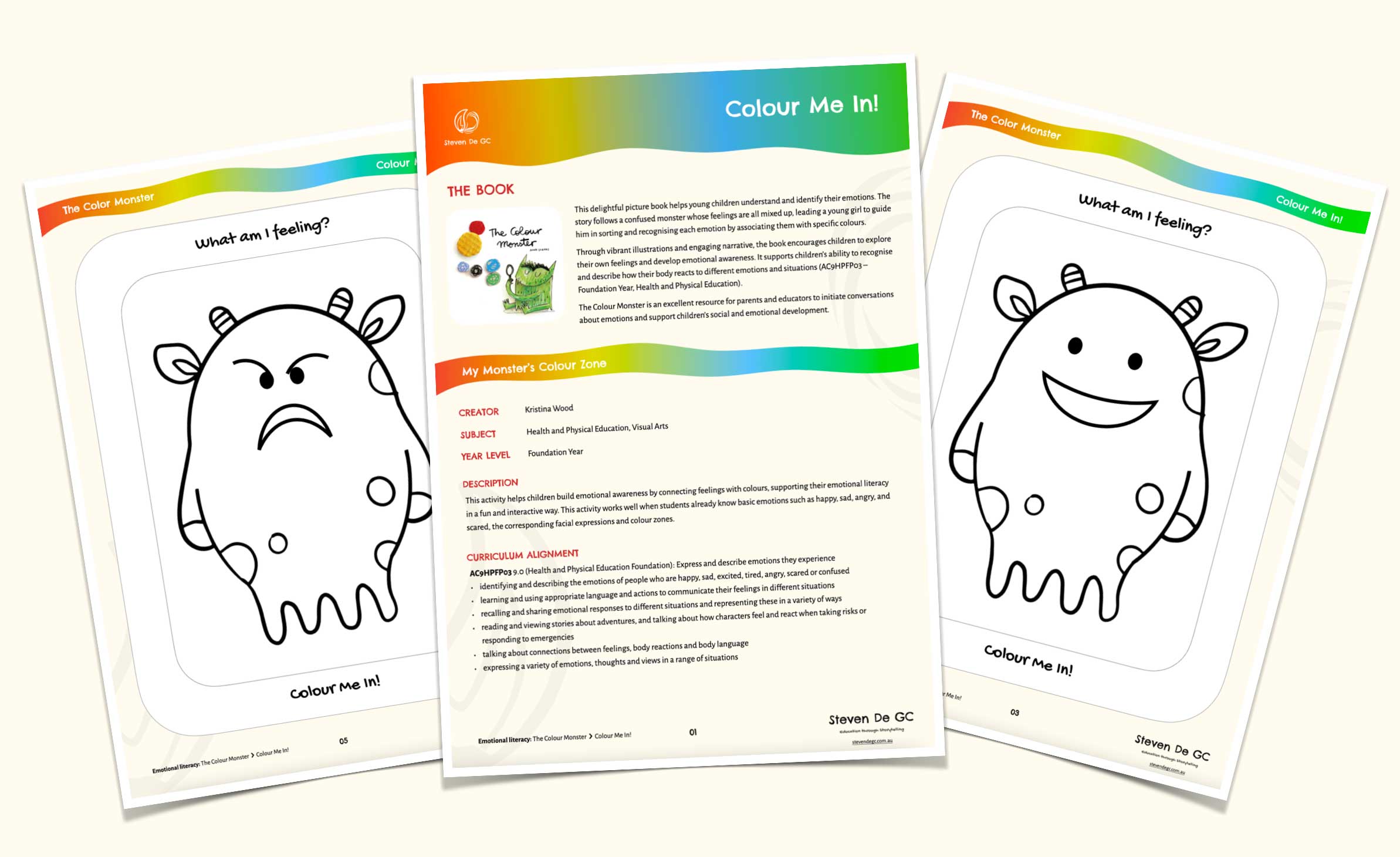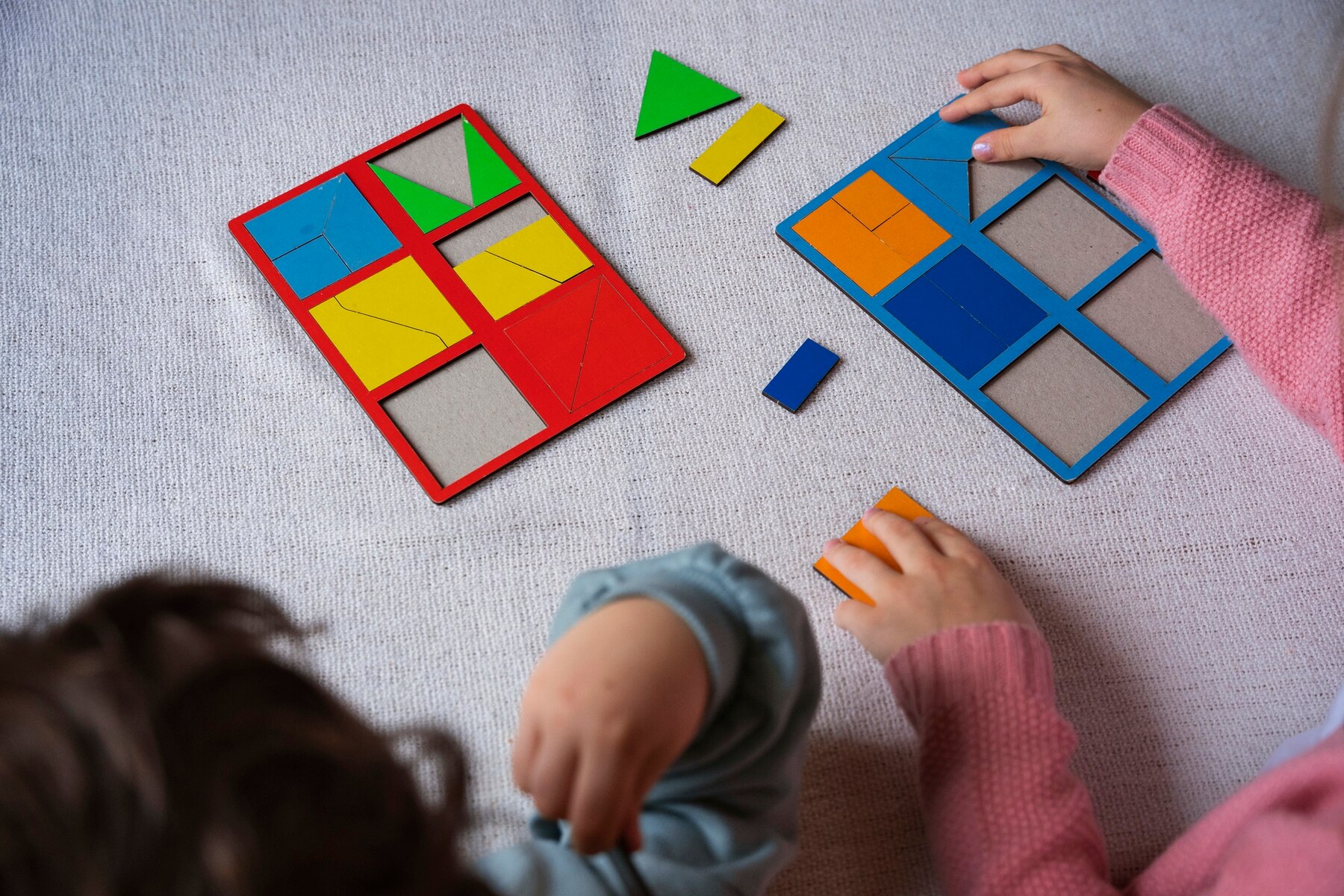Foundation
Children’s Picture Books and Activities Aligned with the Australian Curriculum for Foundation Year
This section brings together children’s books, learning activities, and lessons suitable for Foundation year students (age 5), aligned with the Australian Curriculum. Resources span key learning areas including English, Mathematics, Science, Design and Technologies, Humanities and Social Sciences (HaSS), and Health and Physical Education.
Whether you’re a teacher planning your week or a parent supporting learning at home, you’ll find age-appropriate content to engage early learners through stories, hands-on exploration, and creative play.
If you’re looking for specific themes or topics across multiple year levels (such as for a split class), we recommend browsing through our Subject section for more targeted results.
-
Can I Play Too?
Written & illustrated by Mo Willems
Published by Hyperion Books for Children
Theme/topic: Friendship, Inclusion, and Persistence
Can I Play Too? by Mo Willems is a heartwarming and humorous story about friendship, inclusion, and problem-solving. When a new friend, Snake, wants to join Elephant and Piggie’s game of catch, the duo faces a challenge—how can someone without arms play? Through their creativity and determination, the friends work together to find a way for everyone to be included.
This engaging story provides an opportunity for children to practise personal and social skills to interact respectfully with others (AC9HPFP02 – Foundation Year, Health and Physical Education). Teachers and students can explore how characters experience exclusion, discuss why it happens, and consider ways to make activities more inclusive. With its simple yet expressive illustrations and playful dialogue, Can I Play Too? fosters inclusion, empathy, problem-solving, and cooperation, making it a valuable resource for early childhood social-emotional learning.
Strictly No Elephants
Written by Lisa Mantchev
Illustrated by Taeeun Yoo
Published by Simon & Schuster/Paula Wiseman Books
Theme/topic: Friendship, Inclusion, and Persistence
This heartwarming book talks about friendship, inclusion, and embracing differences. The book follows a young boy and his tiny pet elephant as they excitedly approach a pet club meeting, only to be turned away by a sign that reads “Strictly No Elephants.” Undeterred, the boy and his elephant set out to create their own inclusive club, welcoming all kinds of pets and friends.
This uplifting story encourages children to practise personal and social skills to interact respectfully with others (AC9HPFP02 – Foundation Year, Health and Physical Education). Through the experiences of the main character and his elephant, young readers can identify characters who have been excluded, explore the reasons behind their exclusion, and discuss how others could have acted more inclusively. The book’s gentle message, paired with its expressive illustrations, reinforces the value of belonging and the power of creating welcoming spaces for everyone. Strictly No Elephants is an inspiring read that fosters empathy, emotional intelligence, and social awareness in young readers.
What Am I Feeling?
📔 In My Heart: A Book of Feelings by Jo Witek• Students will understand how emotions are expressed through facial expressions and body language and recognise how feelings affect their bodies.
The Colour Monster: Colour Me In!
📔 The Colour Monster by Anna Llenas• Students are learning to develop their ability to identify the colour zone of feelings.
My Monster’s Colour Zone
📔 The Colour Monster by Anna Llenas• Students are learning to develop their ability to identify the colour zone of feelings.
The Colour Monster
Written & illustrated by Anna Llenas
Published by Templar
Theme/topic: Emotion recognition
This delightful picture book helps young children understand and identify their emotions. The story follows a confused monster whose feelings are all mixed up, leading a young girl to guide him in sorting and recognising each emotion by associating them with specific colours.
Through vibrant illustrations and engaging narrative, the book encourages children to explore their own feelings and develop emotional awareness. It supports children’s ability to recognise and describe how their body reacts to different emotions and situations (AC9HPFP03 – Foundation Year, Health and Physical Education).
The Colour Monster is an excellent resource for parents and educators to initiate conversations about emotions and support children’s social and emotional development.
Fun Activities to Teach Shapes for Foundation Year
Discover engaging activities to teach shapes to Foundation Year students using storytelling with books like Shapes with Little Fish, Shapes at the Party and Shapes of Australia. Combine fun and learning seamlessly!
Home for the Fish!
📔 Shapes with Little Fish by Lucy Cousins• Students are learning to identify and match basic shapes.
Shapes with Little Fish
Written & illustrated by Lucy Cousins
Published by Walker Books
Theme/topic: Rhyme and Shapes
Shapes with Little Fish is a bright and engaging picture book that introduces young children to basic shapes through playful underwater adventures. The book helps early learners name, describe and trace shapes (AC9MFSP01, ACMMG009 – Foundation Year, Mathematics) through simple, rhythmic text (AC9EFLY09, ACELA1439 – Foundation Year, English), which also supports reading while fostering early geometric awareness. In addition, the cheerful character of Little Fish guides readers through a lively exploration of shape recognition in an accessible and interactive way.
Shape Party Colouring
📔 Shapes at the Party: A Book of Shapes by Kat Macleod• We are learning to recognise 2D shapes in everyday objects.
Shapes at the Party: A Book of Shapes
Written & illustrated by Kat Macleod
Published by Thames & Hudson
Theme/topic: Shapes
This vibrant and engaging book introduces young readers to the concept of shapes in a fun and playful setting. Through its dynamic illustrations, children explore a variety of shapes—such as circles, triangles, and squares—while following the excitement of a party scene. The book aligns with AC9MFSP01 (Foundation Year, Mathematics), which focuses on identifying and describe familiar two-dimensional shapes within objects in the environment. As children engage with the visuals, they develop geometric awareness and recognition skills in an enjoyable and meaningful context. With its bold artwork and interactive storytelling, Shapes at the Party fosters curiosity and learning through real-world applications of geometry, making it a valuable resource for early mathematical exploration.
Geometric Landscape
📔 Shapes of Australia by Bronwyn Bancroft• Students learn to identify, sort, and name familiar 2D shapes
Shapes of Australia
Written & illustrated by Bronwyn Bancroft
Published by Little Hare Books
Theme/topic: Culture, First Nations, Shapes, Visual Arts, and Vocabulary expansion
The book is an artistic exploration of Australia’s diverse landscapes through the lens of geometric shapes. The book introduces young readers to the natural world by identifying and describing various shapes found in the environment, such as circles in the treetops, triangles in the mountains, and spirals in shells. This aligns with the learning objective AC9MFSP01, ACMMG006 (Mathematics, Foundation Year), which focuses on identifying and describing familiar two-dimensional shapes in the environment. Additionally, the book supports AC9AVAFD01, ACAVAM106 (Visual Arts, Foundation Year) by encouraging young readers to explore how visual arts express ideas about the world. Through Bancroft’s detailed and culturally rich illustrations, children learn to interpret and appreciate the unique beauty of Country through the use of shapes and patterns in visual storytelling. This beautifully illustrated book not only enhances children’s geometric understanding but also deepens their appreciation for the visual arts, making it a valuable resource for integrated learning in mathematics and art.
Teaching Counting Through Storytelling: Practical Activities with 3 Storybooks
Engage kids with maths through storytelling! Discover children’s books and hands-on activities to teach counting and numbers in fun, interactive ways aligned with the Australian Curriculum.
Bears On Wheels (Counting)
📔 Bears on Wheels by Jan Berenstain and Stan Berenstain• Students will practise counting numbers up to 10.
Let’s Count Feet
📔 One Is a Snail, Ten Is a Crab by April Pulley Sayre and Jeffrey Sayre• Students are practising basic counting skills up to 10.
Dino Counting – One less concept
📔 Ten Little Dinosaurs by Mike Brownlow• Students are learning to count backwards through the one-less number concept.
Ten Little Dinosaurs
Written by Mike Brownlow
Illustrated by Simon Rickerty
Published by Orchard Books
Theme/topic: 0 – 10 and Counting
This delightful rhyming adventure captivates young readers with its playful text and vibrant illustrations. The story counts down from 10 to 1 as a group of mischievous little dinosaurs encounters various adventures and challenges, blending humour with basic counting skills (ACMNA001, AC9MFN01 – Foundation Year, Mathematics). It connects number names, numerals, and the number of dinosaurs (ACMNA002 – Foundation Year, Mathematics), making it a valuable tool for early numeracy. The rhymes and repetitive patterns not only entertain but also foster language development and phonemic awareness (ACELA1439 – Foundation Year, English). With its engaging narrative and educational focus, Ten Little Dinosaurs is a perfect read-aloud choice for young children, combining fun and learning in one enjoyable package.
Bears on Wheels
Written & illustrated by Jan Berenstain and Stan Berenstain
Published by Random House Books for Young Readers
Theme/topic: 0 – 20, Counting, and Subitising
This lively and engaging story introduces young readers to basic counting from 1 to 10 (ACMNA001, AC9MFN01 – Foundation Year, Mathematics). The simple yet entertaining narrative follows bears as they ride on wheels in various configurations, showcasing relationships between numbers and objects (ACMNA002 – Foundation Year, Mathematics). Through its use of repetitive patterns and clear visual representations, the book helps children practise subitising small collections (ACMNA003 – Foundation Year, Mathematics). With its playful illustrations and rhythmic text, Bears on Wheels is an excellent resource for building early numeracy skills in an enjoyable and interactive way.
One Is a Snail, Ten Is a Crab
Written by April Pulley Sayre and Jeffrey Sayre
Illustrated by Randy Cecil
Published by Walker Books
Theme/topic: Addition, Comparison, Counting, Grouping, and Repeated addition
This delightful and imaginative book introduces young readers to counting (ACMNA001, AC9MFN01 – Foundation Year, Mathematics) and basic multiplication concepts. By using the number of feet on various animals, the story encourages children to explore basic counting with feet (ACMNA002 – Foundation Year, Mathematics) and repeated addition, grouping, and arrays to represent numbers. This creative approach not only reinforces counting skills but also provides a playful foundation for understanding multiplication (ACMNA031 – Year 2, Mathematics). Additionally, the book supports early number recognition and sequencing as children practice counting and comparing quantities. With its vibrant illustrations and humorous scenarios, this book engages young learners while fostering critical thinking and problem-solving skills in an enjoyable way.






















